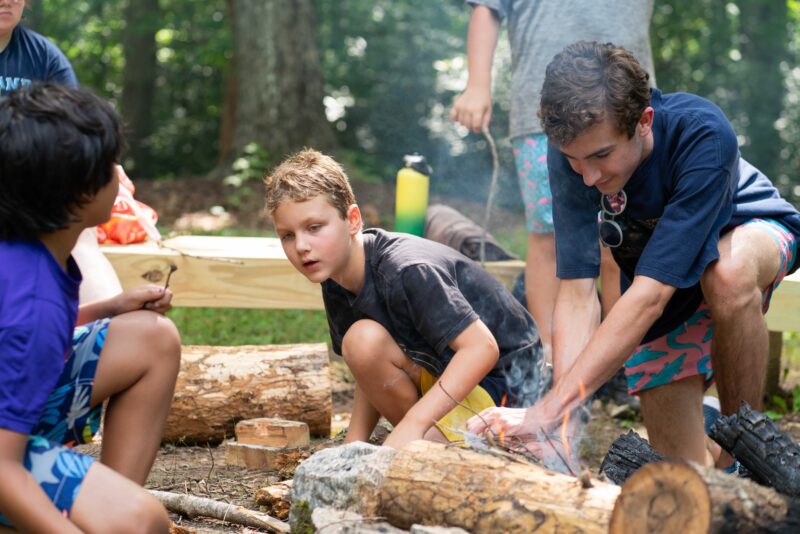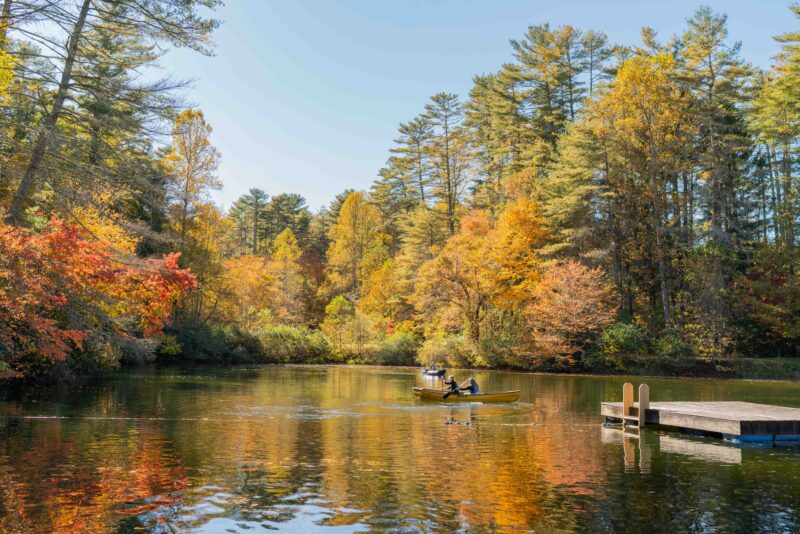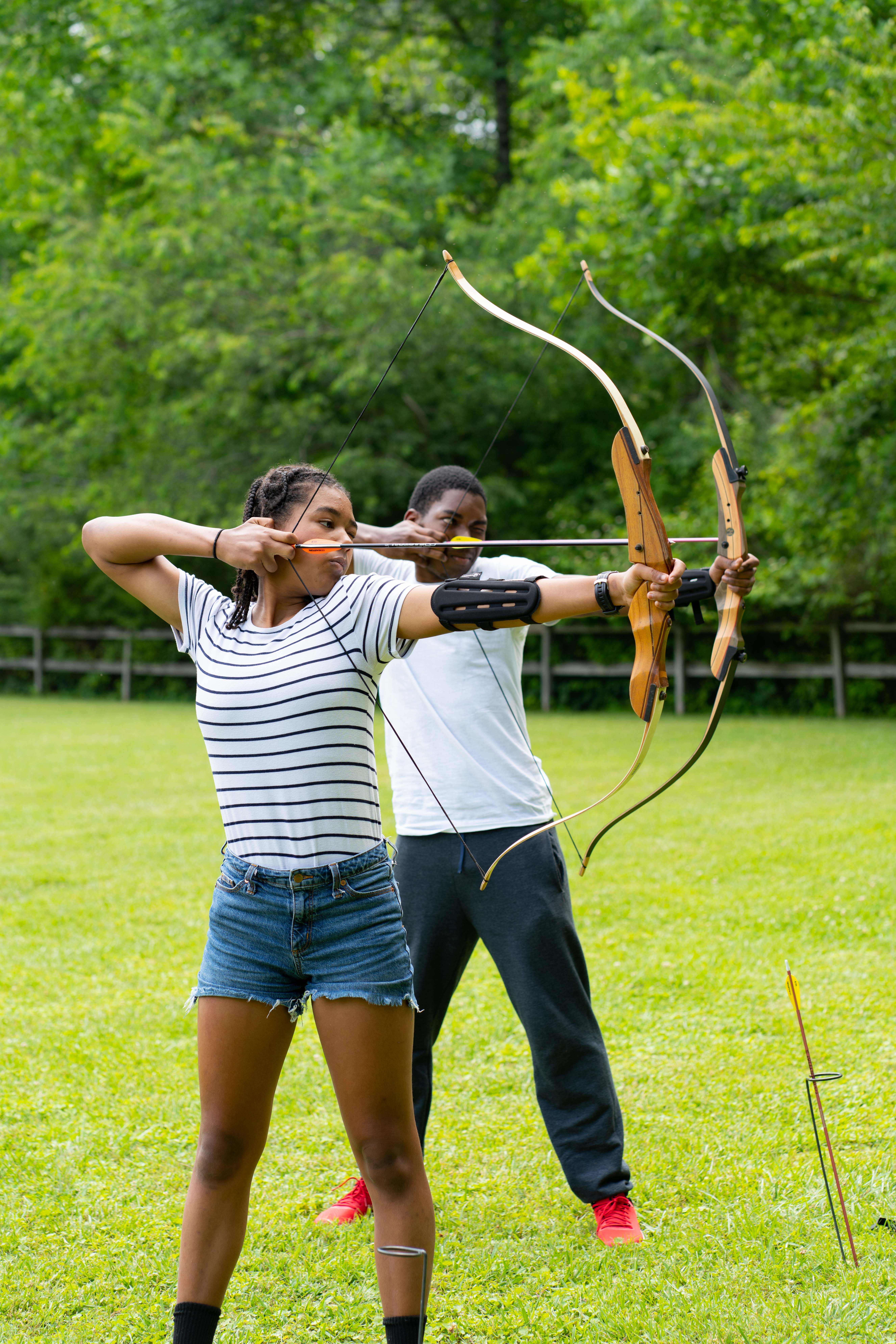By Ben Sunding, Camp Program Manager
Experiential Education. I hear this alliterated title everywhere in my social and professional circles. I even hear various shorthands of it; Experiential Ed, Outdoor Ed, OEE, (in the outdoor industry we love abbreviations). I hear many people use these terms in one way or another, but I almost never hear people truly define them. Perhaps, this is due to an expectation that an audience of outdoor professionals already have an understanding of what Experiential Education means. However, I’d like to explore a little bit more deeply what Experiential Ed is, how it’s used, and why it is taking over the education landscape by storm.
A quick google search may bring you to the website of The Association for Experiential Education who define Experiential Ed as “a teaching philosophy that informs many methodologies in which educators purposefully engage with learners in direct experience and focused reflection in order to increase knowledge, develop skills, clarify values, and develop people’s capacity to contribute to their communities.” If you’re anything like me you stopped reading that definition halfway through. Yes, while it does hit all of the important points of Experiential Ed, I still feel like there’s something missing.
Let us refer to a simpler definition, (and frankly one more human). I often hear that Experiential Ed is “learning by doing.” In an Experiential Education environment, one does not simply listen to a lecture and take notes. Instead, they do some sort of engaging activity and maybe have a thoughtful debrief afterwards. Or they might go on a hike where they learn how to pack a backpack and how to cook on a camp stove. This is certainly “learning by doing”, but I still think that this definition only scratches the surface of what Experiential Education truly is at its core.
Experiential Ed isn’t just a “philosophy” or “methodology”, nor is it just “learning by doing.” Experiential Ed is the look on a child’s face when they see a salamander for the first time. It’s screams of joy you may hear during a game of Capture the Flag. It’s when a kid helps to harvest the tomatoes that end up on their dinner table. It’s when a person was initially scared to go to camp but is now crying because they don’t want to leave.

At Eagle’s Nest, we use experiential learning to turn a forest into a classroom which integrates all the subjects into one lesson. I was recently speaking about this very topic with my good pal Sidney who is the Math Teacher at the Outdoor Academy. I’m paraphrasing our conversation, but she was talking about how nature uses math. Trees figure out where they are getting the most sunlight and are able to quantify how much energy they need to store. A beaver uses math and engineering to design their dams. All at once, nature is able to use math and many of the other subjects we typically study. So, it makes sense to learn about these subjects outdoors in an attempt to further understand how we use them together.
And the learning doesn’t stop with math, science, reading, and history. Our campers and students are learning how to live in an intentional community. They help out with some of the common duties such as table setting and washing dishes. They learn to respect each other’s boundaries and spaces while living in a cabin together. They learn to resolve conflicts as they come up and to not let their frustrations affect others.
So, the question still remains: Why do we use experiential education at Eagle’s Nest and why has it conquered so many other educational environments? I think the answer is simple. Life is one long learning process. We make mistakes, we learn from them, and then we provide other people with learning opportunities. Human kind is unified in that we are all just figuring it out as we go along. The only way to learn from something is to see what the lesson is on the other side. We use this model of teaching at Eagle’s Nest because it taps into the very core of all humans, thus making lessons more relatable, more engaging, and more fun.
Right now at Eagle’s Nest, the leaves are falling and the mornings are becoming evermore chilly. Yet the camp team is currently planning how we can provide our campers with the most authentic educational experience possible. Not only that, but the Outdoor Academy is in full swing and meeting those same goals. So, even though there may be less people on campus and most people are thinking about carving pumpkins rather than swimming in waterfalls, we here at Eagle’s Nest will never stop meeting our mission of Experiential Education for Young People, Promoting the Natural World and the Betterment of Human Character.

